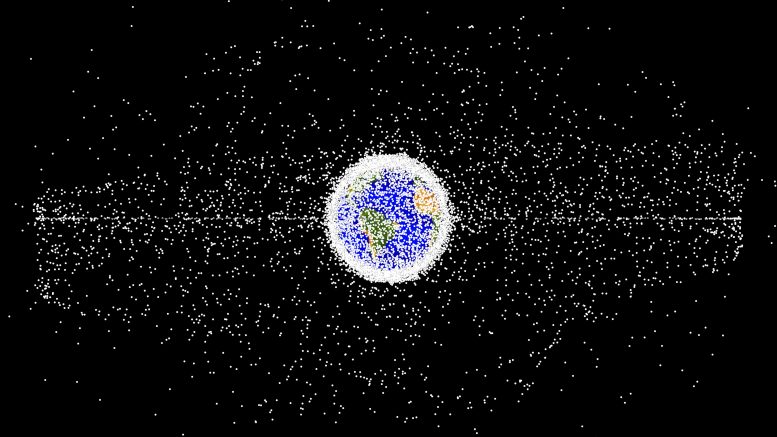

NASA’s new OTPS report identifies cost-effective ways to manage orbital debris, focusing on immediate risk and cost assessments over 30 years. Credit: SciTechDaily.com
Analysis of new data suggests so NASA Its partners may have discovered more cost-effective ways to address the growing problem of orbital debris than previously thought.
NASA’s Office of Technology, Policy, and Strategy released a new report that provides agency leadership with new insight into how to measure the risks posed by orbital debris.
“The increased activity in Earth’s orbit has brought us everything from faster ground communications to a better understanding of our changing climate,” said Charity Weeden, who leads NASA’s OTPS. “These burgeoning opportunities are leading to a more crowded space environment. This study is part of NASA’s work to rapidly improve our understanding of that environment as outlined in NASA’s recently released Space Sustainability Strategy, by applying an economic lens to this critical issue.”
the report, Cost-benefit analysis of orbital debris mitigation, tracking and remediationis the second phase of OTPS’s work to address technical and economic uncertainties associated with orbital debris.

Simulation of orbital debris around Earth showing the number of objects in the geosynchronous region. Credit: NASA ODPO
Progress from previous reports
OTPS First stage report, released in 2023, provided initial information for policymakers seeking cost-benefit analyzes of orbital debris remediation measures including moving, removing, or reusing objects. The new report has improved the quality of estimates of risks to spacecraft from orbital debris. These new estimates cover everything from the largest debris in space to millimeter-sized fragments. The report also expands the focus of OTPS teams to include actions that can mitigate the creation of new debris and track existing debris.
“This study allows us to begin to answer the question: What are the most cost-effective actions we can take to address the growing orbital debris problem?” NASA analyst Jericho Locke, lead author of the report, said. “By measuring everything in dollars, we can directly compare spacecraft protection to tracking smaller debris or removing 50 large pieces of debris to removing 50,000 smaller pieces.”
Innovative methods for measuring risk
The new OTPS report differs from previous orbital debris studies in that it directly estimates the risks posed by space debris, rather than risk proxies such as the number of pieces of debris in orbit. In addition, it measures risk in dollars – by modeling the costs that operators might incur from maneuvering spacecraft to avoid debris, from handling a close approach, and from damage or loss caused by debris impact. The study simulates how the orbital debris environment evolves over 30 years.
Evaluate cost-effective strategies
In total, the study compares the cost-effectiveness of more than 10 different actions that can be taken to reduce orbital debris risks, such as shielding, tracking small debris, or treating large debris. Ultimately, the team hopes to evaluate the cost-effectiveness of combinations of different procedures, known as portfolios.
The report’s analysis revisits common prudent actions that the space community has historically viewed as cost-effective approaches to supporting space sustainability. For example, the report estimates that some debris treatment methods may be just as valuable as debris mitigation. It is also estimated that deorbiting dead spacecraft quickly is a cost-effective way to reduce risks. Such findings could provide new considerations for NASA leaders and the space community when dealing with the issue of orbital debris.
Future plans and public accessibility
OTPS plans to publicly release the research code used to produce the study. The research team plans to continue its work on understanding orbital debris and different approaches to dealing with it and will share its knowledge with stakeholders.

“Web maven. Infuriatingly humble beer geek. Bacon fanatic. Typical creator. Music expert.”





More Stories
Scientists confirm that monkeys do not have time to write Shakespeare: ScienceAlert
SpaceX launches 23 Starlink satellites from Florida (video and photos)
A new 3D map reveals strange, glowing filaments surrounding the supernova